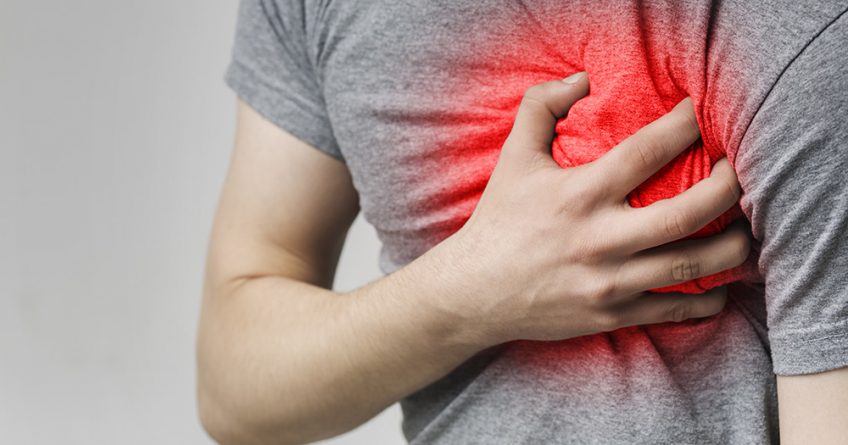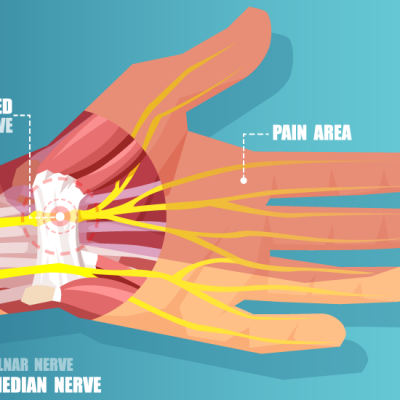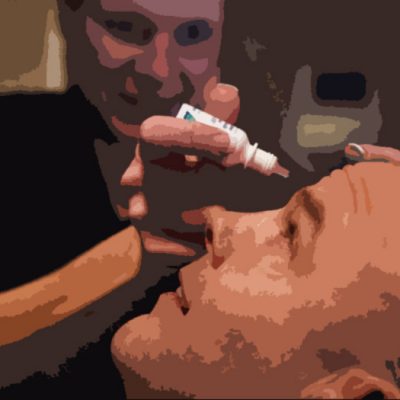Angina is a condition caused by the insufficient flow of oxygen to the heart muscles. This results in acute chest pain and discomfort.
The heart muscle is connected via the coronary arteries. A narrowing or reduced flow of blood causes the heart to receive less oxygen to properly function. The most common cause of narrowed coronary arteries is fatty plaques developing on the walls of the arteries.
Angina is usually recognized as signal that a heart attack is likely to occur. If the artery becomes blocked by either fatty plaques or by a blood clot, the heart will be starved of oxygen. Hence, damage to the myocardial cells (cells of the heart) is almost certain.
Angina Symptoms
The symptoms of angina can include the following:
- Pain, pressure or a feeling of tightness and discomfort in the middle of the chest, which may be accompanied by breathlessness and sweating
- Radiating pain to the neck, jaw and left arm, or both arms
- Sometimes, radiating pain in the upper back and shoulders.
Common Triggers of Angina Pain
Stable angina attacks can be prompted by physical exercise, when the heart muscle requires greater amounts of oxygen. The pain usually fades away with rest. Other triggers of include high amounts of emotion, such as anger or excitement, cold temperatures and eating a large meal.
Unstable angina is characterized by unpredictable attacks, even when the person is not exerting them self. Unstable angina indicates that one or both of the coronary arteries may be dangerously narrow. The risk of having a heart attack is much greater if a person experiences unstable angina.
Treatments and Medications
Treatment for angina depends on the severity of the condition, but may include the following medications.
Aspirin can be taken on a daily basis to help manage the condition by thinning the blood and reducing the risk of blood clots.
Nitrates – Drugs called nitrates can ease the pain of an angina attack. Nitrates can be taken in many forms, including an aerosol pump spray or a tablet dissolved under the tongue. The side effects of nitrates can include flushing, headache and dizziness.
Lifestyle changes – including quitting cigarettes, losing excess body fat, switching to a low fat diet and taking regular exercise (such as walking every day).
Surgery – Procedures such as angioplasty and bypass surgery are used if the angina doesn’t respond to drugs and lifestyle changes.
Drugs to lower the cholesterol level in the blood.
Drugs to lower blood pressure and slow the heart rate, which reduce how hard the heart must work.
Other Treatment: Angioprim
Many opinions have been offered on Angioprim as a treatment for cleaning arteries. The product claims it helps promote a lessening of the symptoms of Angina by binding to unwanted calcium and dissolving arterial plaque.
The action of Angioprim is more than just binding calcium and dissolving plaque. One of the primary health problems of aging is decreased blood flow. Angioprim supposedly assists in the restoration of this lost blood flow.
Angioprim can also act as a powerful anti-coagulant to help prevent and dissolve blood clots. Angioprim claims to also assists in the reduction of platelets that cause coagulation too readily. This tends to alleviate inappropriate thrombosis, which blocks coronary arteries during a heart attack.
Other claims suggests Angioprim helps re-establish the hormone balance responsible for the balancing act between contraction and relaxation of arterial walls and promoting the free flow of blood.









